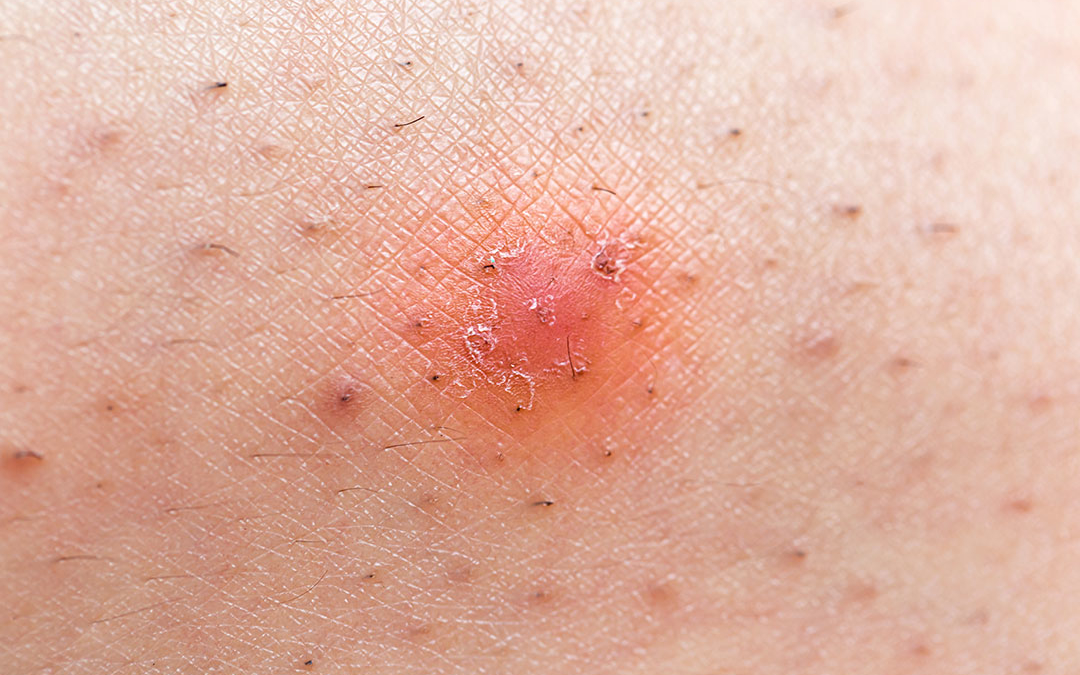Ingrown hairs are a real pain! They are just SO annoying. They can be unsightly at best – nasty little, itchy, red spots – and at worst they can develop into something yucky and painful that leaves a permanent scar.
In this article we’re going to tell you what ingrown hairs are, what causes them, how you can prevent them and how to deal with them.
What is an ingrown hair?
An ingrown hair can develop after you’ve removed a hair by shaving it or pulling it out with tweezers. It happens when a hair grows back into the skin sideways rather than straight up from the skin’s surface.
You may see a small red spot or bump and feel some irritation or itching. Hair can be trapped and growing inside the bump. In some cases, a skin infection can develop and you end up with a bigger, sore spot, filled with pus. Yuck!
Both women and men can suffer from ingrown hairs. They can grow anywhere but they are particularly common on the face and neck, armpits, legs and pubic area.
What causes ingrown hairs?
People with facial and body hair that is coarse and bendy are more prone to get ingrown hairs, because it’s easier for the hair to grow into the skin once it has been cut.
Shaving creates a sharp edge to a strand of hair, which can make it more likely to in-grow, especially if the hair is dry when it is shaved. If you remove hair with tweezers, sometimes a fragment can be left behind under the surface of the skin resulting in an ingrown hair. The same can happen after waxing if a hair breaks and leaves a jagged piece behind.
Once the hair starts growing into the skin, the body reacts as if it’s being invaded by a foreign body and that is why the skin around the hair gets inflamed and irritated.
If you allow dead skin cells to build-up on the surface of the skin they can encourage ingrown hairs because they create a blockage and the hair tries to find a way round and ends up ingrowing.
How can you prevent ingrown hairs?
Shaving, tweezing and waxing are the methods of hair removal that cause ingrown hairs. If you are having a problem with ingrown hairs, it would be best to avoid these three methods.
Laser hair removal is a great way of ending the risk of ingrown hairs. This method sends a beam of laser energy through the skin directly into the hair follicle, permanently damaging it so that it cannot regrow. The hair is not broken or cut so there is nothing that can be left behind to continue to grow sideways into the skin.
If you are going to continue shaving, you should avoid pulling the skin taut as you shave. This is because pulling the skin taut allows the cut hair to draw back into the skin. You should shave in the direction that the hair is growing and wet your skin with warm water and use a shaving gel or cream.
Exfoliating the skin gently and regularly is important as well to remove dead skin cells.
How should you deal with ingrown hairs?
If you’ve got some unsightly ingrown hairs it’s not too late to take action. Laser hair removal can permanently reduce hair growth by 80-90% and remove ingrown hairs. The laser energy is attracted to melanin in the hair, the stuff that gives hair its colour. The energy works right down to the root of the hair, so fragments of hair beneath the skin’s surface are destroyed too.
As mentioned before, exfoliating regularly as part of your beauty routine is important to remove dead cells that can build up on the skin’s surface and make hairs growing inward.
You will need to shave before you come to us for a laser hair removal treatment session. Just remember to use a creamy shaving gel and shave in the direction that the hairs are growing.
What next?
Why not book your free consultation and patch test here at Avance Clinic? Our trained laser hair removal experts will take a look at any problem ingrown hairs and offer you advice and reassurance ahead of starting a course of treatment. Then, you can look forward to smooth, soft skin free of ingrown hairs once and for all.

